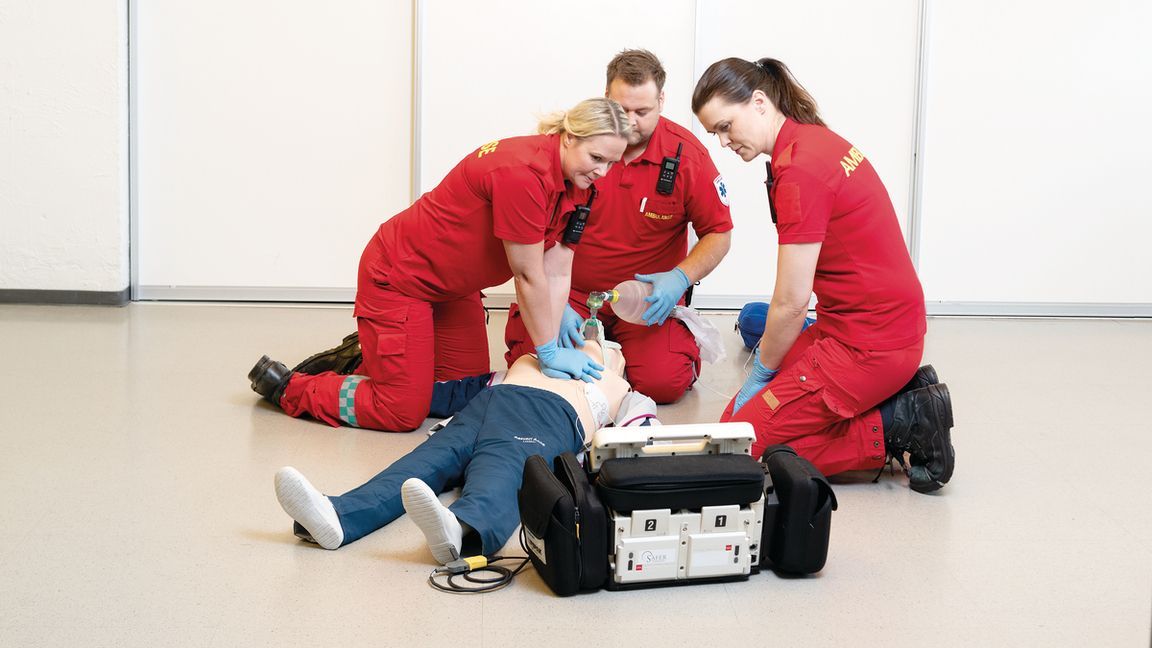Introduction
When it comes to performing cardiopulmonary resuscitation (CPR), every second counts. CPR is a life-saving technique that involves chest compressions to restore blood circulation and provide oxygen to the brain during cardiac arrest. However, performing high-quality chest compressions can be challenging, even for trained professionals. That’s where chest compression feedback devices come into play. These innovative devices provide real-time feedback and monitoring, empowering rescuers to deliver effective compressions and improve CPR outcomes. In this article, we will explore the vital role of chest compression feedback devices, their benefits, and the metrics they monitor to ensure optimal CPR performance.
How Chest Compression Feedback Devices Work
Chest compression feedback devices are designed to assess and provide immediate feedback on the quality of chest compressions during CPR. These devices typically utilize sensors or accelerometers placed on the patient’s chest or within the rescuer’s hand to measure various parameters. By analyzing these parameters, the device can offer real-time guidance and corrective measures to enhance the effectiveness of chest compressions.
Benefits of Using Chest Compression Feedback Devices
Using a chest compression feedback device during CPR offers numerous benefits, including:
- Improved CPR Outcomes: Feedback devices help rescuers deliver chest compressions that meet the recommended guidelines, leading to improved blood circulation and a higher chance of survival.
- Real-time Performance Evaluation: Rescuers receive instant feedback on their chest compression technique, allowing them to make immediate adjustments and optimize their performance.
- Enhanced Training: Feedback devices serve as valuable training tools, allowing healthcare professionals and laypeople to develop and maintain their CPR skills by providing objective assessments and performance benchmarks.
- Quality Assurance: These devices facilitate quality assurance in chest compressions by monitoring critical metrics, ensuring consistent and effective CPR delivery across different providers and settings.
Metrics Monitored by Chest Compression Feedback Devices
Chest compression feedback devices monitor several key metrics to evaluate the quality of chest compressions. These metrics include:
a) Compression Depth: Compression depth refers to the depth of each chest compression. Feedback devices measure and provide guidance on achieving the optimal compression depth recommended by guidelines, typically around 2-2.4 inches (5-6 cm). Adequate compression depth ensures effective blood flow and oxygenation.
b) Compression Rate: The compression rate is the number of compressions delivered per minute. Guidelines recommend a rate of 100-120 compressions per minute. Feedback devices monitor this rate and guide rescuers to maintain an appropriate pace, ensuring sufficient circulation.
c) Hand Placement and Position: Proper hand placement and position during chest compressions are crucial for effective CPR. Feedback devices provide real-time guidance on correct hand positioning, minimizing the risk of suboptimal compressions and potential injuries.
d) Compression Recoil: Compression recoil refers to the release of pressure after each compression. It allows the heart to refill with blood before the next compression. Feedback devices ensure that rescuers allow complete recoil between compressions, optimizing blood flow and minimizing interruptions.
Types of Chest Compression Feedback Devices
Several types of chest compression feedback devices are available on the market, catering to different user needs and settings. Some devices are integrated with automated external defibrillators (AEDs), combining CPR feedback with defibrillation capabilities for comprehensive cardiac arrest management. Other devices are standalone units designed specifically for CPR training, enabling users to practice and receive immediate feedback on their technique.
Research and Effectiveness of Chest Compression Feedback Devices
Extensive research has been conducted to evaluate the effectiveness of chest compression feedback devices. Studies have consistently shown that the use of feedback devices improves the quality andeffectiveness of CPR. Rescuers who receive real-time feedback tend to achieve better compression depth, rate, and recoil, leading to increased survival rates for cardiac arrest patients. These devices have also been found to enhance the confidence and performance of CPR providers, reducing the risk of improper chest compressions and increasing overall CPR proficiency.
Guidelines and Standards for Using Chest Compression Feedback Devices
Guidelines and recommendations from renowned organizations such as the American Heart Association (AHA) and the European Resuscitation Council (ERC) highlight the importance of using chest compression feedback devices to optimize CPR performance. These guidelines outline the specific metrics that should be monitored, the recommended target values, and the integration of feedback devices in CPR training programs.
Limitations and Considerations
While chest compression feedback devices offer significant benefits, it’s important to be aware of their limitations. These devices are aids for CPR performance and should not replace proper training and knowledge of CPR techniques. Additionally, certain factors such as patient body size, underlying medical conditions, and rescuer fatigue may influence the accuracy of the feedback provided. Rescuers should always use their clinical judgment alongside the device’s guidance.
Frequently Asked Questions
Q1: How do chest compression feedback devices work?
Chest compression feedback devices utilize sensors to monitor chest compressions and provide real-time guidance on compression depth, rate, hand placement, and recoil.
Q2: Can chest compression feedback devices improve CPR outcomes?
Yes, feedback devices have been shown to enhance CPR outcomes by ensuring proper compression technique and optimizing blood flow during cardiac arrest.
Q3: Are chest compression feedback devices effective for both healthcare professionals and laypeople?
Yes, chest compression feedback devices are beneficial for both healthcare professionals and laypeople, as they provide objective feedback and enable skill development and maintenance.
Q4: Are there different types of chest compression feedback devices available?
Yes, there are various types of chest compression feedback devices, including standalone units for training and integrated devices with AED capabilities for comprehensive resuscitation management.
Q5: How accurate are chest compression feedback devices in assessing the quality of compressions?
Chest compression feedback devices have been found to be accurate in assessing compression depth, rate, hand placement, and recoil, providing valuable real-time feedback to rescuers.
Q6: Are there guidelines or standards for using chest compression feedback devices in CPR training?
Yes, organizations like the AHA and the ERC provide guidelines and standards for integrating chest compression feedback devices into CPR training programs, ensuring standardized and effective training.
Conclusion
Chest compression feedback devices play a vital role in enhancing the quality and effectiveness of CPR. By monitoring critical metrics and providing real-time guidance, these devices empower rescuers to deliver optimal chest compressions during cardiac arrest. The evidence-backed benefits, extensive research, and adherence to established guidelines make chest compression feedback devices indispensable tools in improving CPR outcomes and saving lives. Incorporating these devices into CPR training programs can foster confidence, proficiency, and ultimately increase the chances of survival for individuals experiencing cardiac arrest.










